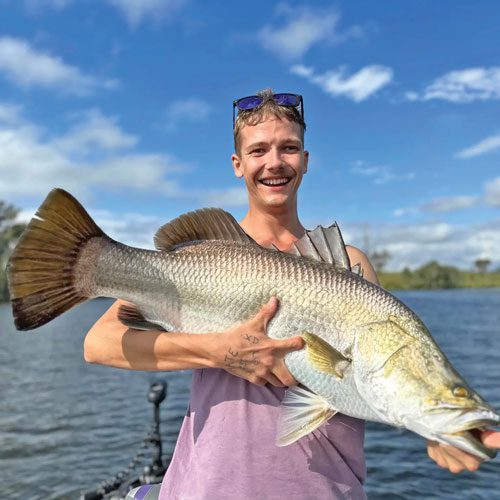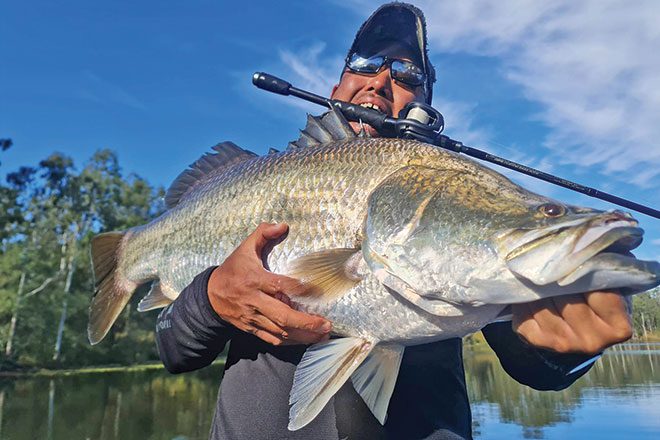It’s the start of winter – historically the time when most impoundment barramundi anglers put away their rods for a few months.
While it’s true that the fishing can be a little tougher for a stint, barra are certainly still very catchable.
In the colder months, there is one thing heavily in your favour, which is that the fish will look to feed during a specific period – when the water is at its warmest.
This means you can be on the water knowing the fish are likely to be in the mood and not resting up for a feed later.
As with any of the seasons though, you will have to employ the correct techniques to ensure good catch rates.
In winter, these techniques will generally involve smaller lures and slower retrieve speeds.
Before we get into specific techniques, I’ll go through the things to look for when working out a good day to fish.
Barramundi are a tropical species and require warm water to survive.
Winter provides their biggest challenge of the year, with some of the less healthy fish commonly succumbing to the elements.
Despite this, life continues on for the vast majority of fish, though at a slower pace.
Given their preference for warmer water, sunny days with a light to moderate wind are perfect for getting the fish feeding.
The best fishing times are as the water temperature rises – from mid to late morning and into the afternoon.
During June, the water temperature gradually falls to its lowest point of the year, so you will find fish may still be holding in areas where the water temperature is more stable.
Spots to look for are points and flats with wind pushing onto them.
During periods of stable warm weather, fish tend to push deep into shallow bays where the water could be 1-2 degrees warmer than the main water body, and this behaviour will become more prolific over coming months.

Small suspending jerk baits – such as the Jackall Squirrel 79 – become very effective because the fish hold in good numbers on the points and flats.
It is very important to have your lure suspending – this means not sinking or floating – and can be achieved through altering the weight of trebles and split rings.
Fishing slow with small twitches and long pauses will provide lethargic fish with an easy meal.
Natural colours that don’t have a bright flash will be much more effective in clearer water, as bright colours will often spook fish.
On days when the fish have pushed deep into the shallow bays, the most effective technique is to use lightly weighted soft plastics.
Over recent years, my go-to for this scenario were 5” shads rigged on a TT Fishing Headlockz 1/8oz 6/0 jig head.
It is essential to fish as slowly as possible without getting caught up in the weed.
A lot of the time, these fish will be held up along a weed edge and so dropping the plastic down the face of the weed can be necessary to get a bite.
One last thing to consider when chasing winter barra is that they will be very easy to spook.
Complete stealth is very important when targeting big barramundi.
Even loud talking can be enough to put a fish off from biting.
Spooked fish may not necessarily leave the area during winter because they look to preserve energy, but they will likely avoid feeding for a period of time.
Always anchor or tie off to a tree when possible.
Good luck to anyone headed to the lake for a fish – I hope to see some big fish caught over the next month.
 Bush ‘n Beach Fishing Magazine Location reports & tips for fishing, boating, camping, kayaking, 4WDing in Queensland and Northern NSW
Bush ‘n Beach Fishing Magazine Location reports & tips for fishing, boating, camping, kayaking, 4WDing in Queensland and Northern NSW









